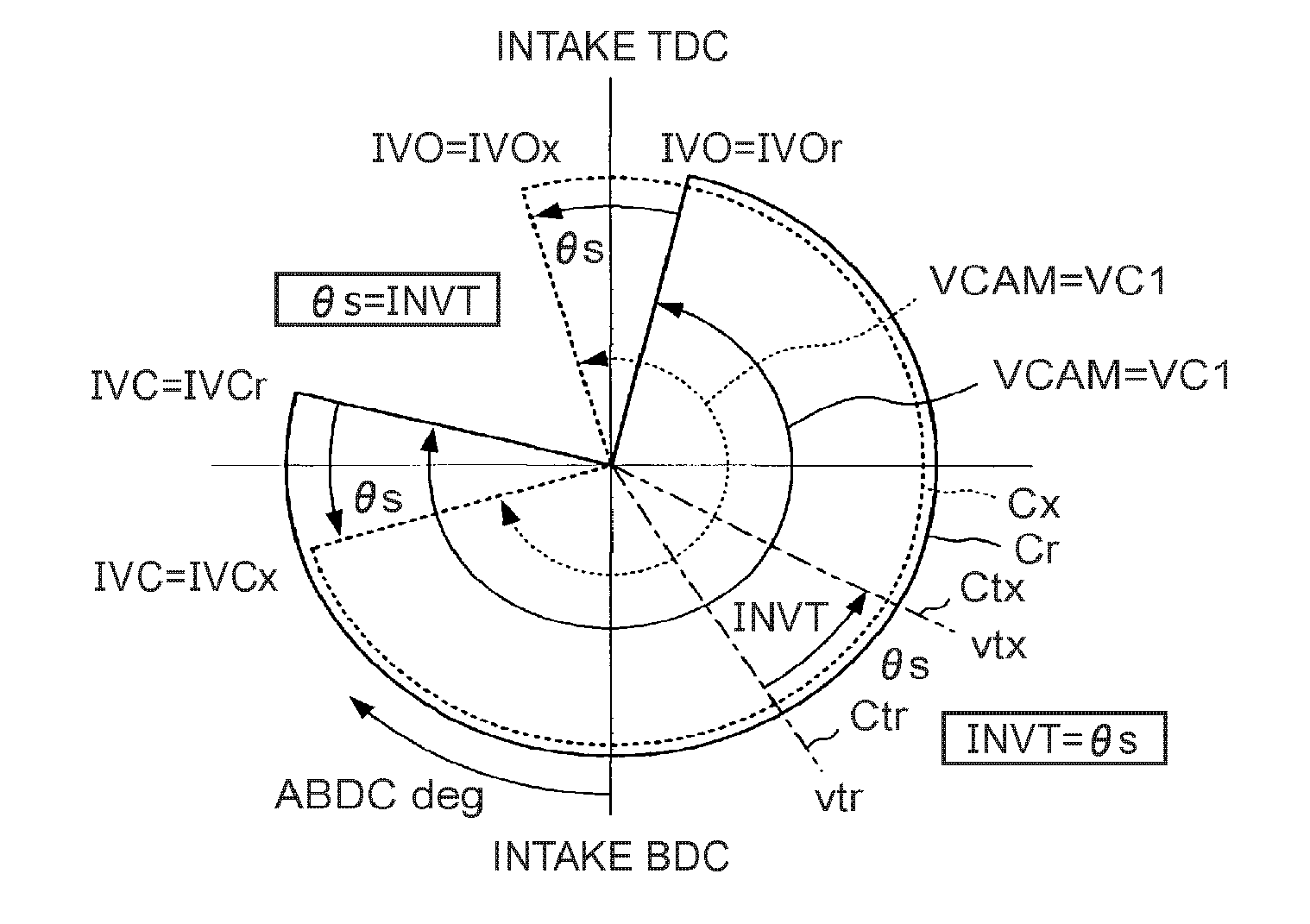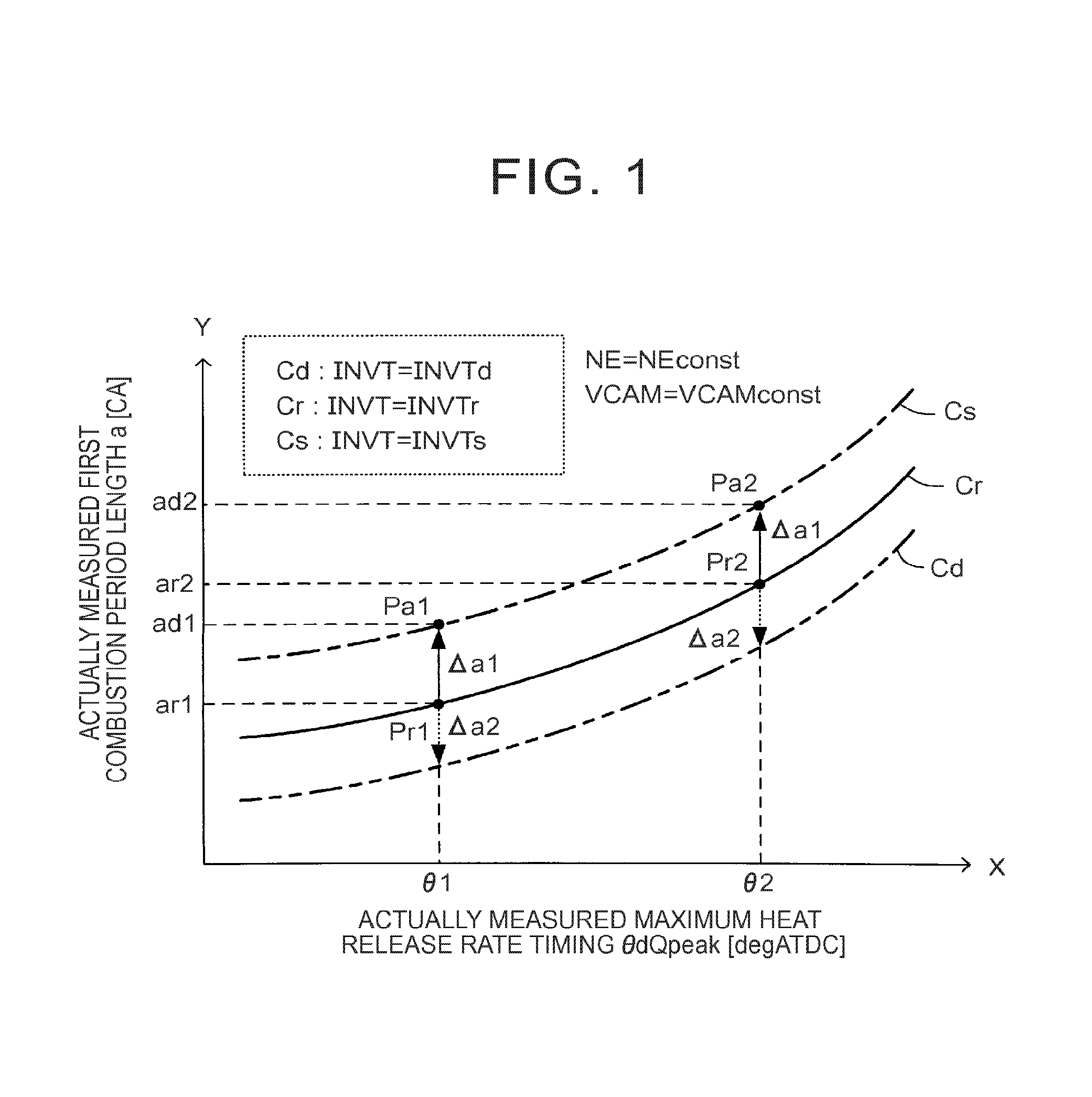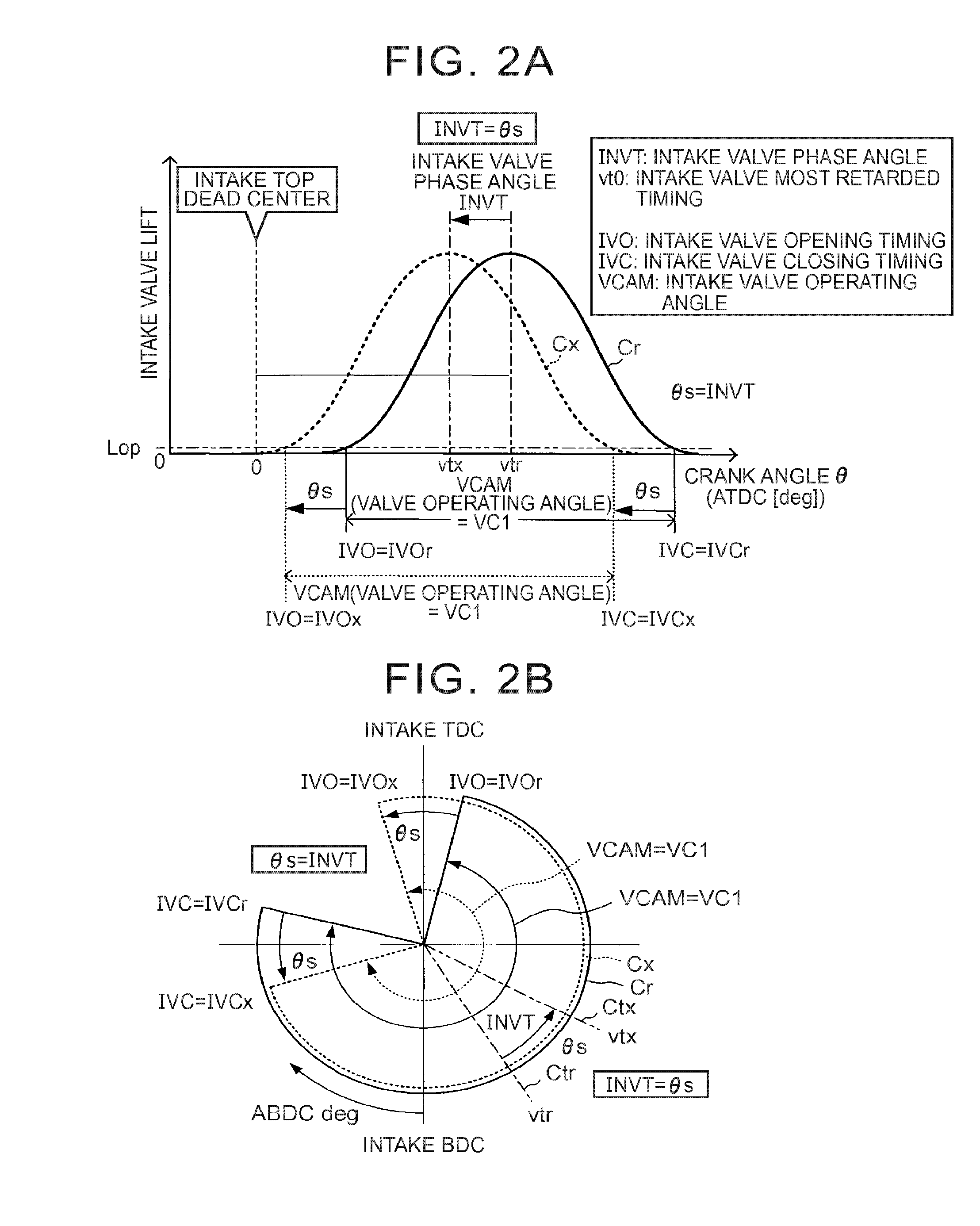Combustion state estimation method
- Summary
- Abstract
- Description
- Claims
- Application Information
AI Technical Summary
Benefits of technology
Problems solved by technology
Method used
Image
Examples
first application example
[0200]For example, the above-described mathematical expression (3) and the findings 1 (the above-described mathematical expression (1A) or mathematical expression (1B)) of the embodiment method are also used in the routine shown by the flowchart in
[0201]FIG. 35. This routine is used instead of the routine shown in FIG. 15 when the intake valve phase angle INVT is a specific phase angle INVTx and the intake valve operating angle VCAM is the reference valve operating angle VCAMr (that is, when the valve opening characteristic of each intake valve is a specific characteristic that differs from the reference characteristic in only the intake valve phase angle INVT). Hereinafter, this routine will be simply described. Like step numbers denote the steps shown in FIG. 35 and also shown in FIG. 15, and the description of those steps is omitted. The CPU receives the specific phase angle INVTx in step 1505.
[0202]When the CPU calculates the combustion chamber volume V@θzdQpeak at the virtual m...
second application example
[0209]For example, the above-described mathematical expression (3) and the findings 2 (the above-described mathematical expression (2A) or mathematical expression (2B)) of the embodiment method are also used in the routine shown by the flowchart in FIG. 36. This routine is used instead of the routine shown in FIG. 15 when the intake valve operating angle VCAM is the specific operating angle VCAMx and the intake valve closing timing IVC is the reference valve closing timing IVCr (that is, when the valve opening characteristic of each intake valve is a specific characteristic that differs from the reference characteristic in only the intake valve operating angle VCAM). Hereinafter, this routine will be simply described. Like step numbers denote the steps shown in FIG. 36 and also shown in FIG. 15, and the description of those steps is omitted. The CPU receives the specific valve operating angle VCAMx in step 1505.
[0210]When the CPU calculates the combustion chamber volume V@θzdQpeak a...
PUM
 Login to View More
Login to View More Abstract
Description
Claims
Application Information
 Login to View More
Login to View More - R&D
- Intellectual Property
- Life Sciences
- Materials
- Tech Scout
- Unparalleled Data Quality
- Higher Quality Content
- 60% Fewer Hallucinations
Browse by: Latest US Patents, China's latest patents, Technical Efficacy Thesaurus, Application Domain, Technology Topic, Popular Technical Reports.
© 2025 PatSnap. All rights reserved.Legal|Privacy policy|Modern Slavery Act Transparency Statement|Sitemap|About US| Contact US: help@patsnap.com



